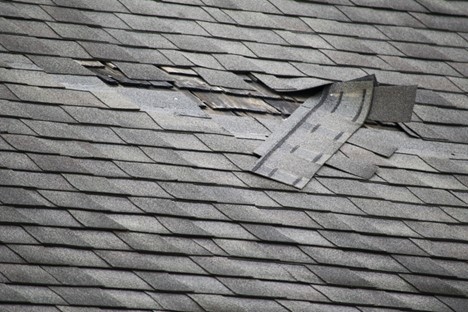5 Essential Steps to Keep Your Roof Safe
Five Essential Steps that Should Be on Your Roof Safety Checklist in San Jose, CA
Preventive maintenance is one of the most effective ways to keep your roof safe and reduce the risk of roof damage or failure. However, many homeowners in the Bay Area neglect roofing maintenance and do not schedule regular roofing inspections. This means that if their roof has minor damage or if their roofing materials are degrading, they may not know until the problem gets bigger and their home suffers from a major roofing problem.
At Westshore Roofing, we recommend following key roofing safety guidelines to enhance the safety, lifespan, and performance of your home’s roofing system. Here is a look at the importance of roof safety, common challenges that affect local roofs, and the five essential steps that should be on your roof safety checklist in San Jose, CA, and the Greater Bay Area.

Identifying Common Roofing Challenges in the Bay Area
Roofing systems in the Bay Area may be at a higher risk of certain problems due to the weather and climate in our region. Rainy winters, coastal fog, extreme sun and heat, and moisture and humidity issues can speed up the degradation of even the highest-quality roofing materials. The most common risks to Bay Area roofs include:
- Moisture, water damage, and roof rot
- Mold, mildew, and algae growth
- Roof leaks
- Insect, rodent, and bird damage
- Pooling water on flat roofs
- Clogged or damaged gutters
- Damage from fallen trees or branches
- Faulty roofing installations
- Low-quality roofing materials
- Lack of roof maintenance
The Role of Roof Maintenance in Protecting the Safety of Your Roof
Preventive maintenance is crucial for protecting the safety of your roof. Being proactive about roofing inspections and maintenance will help you catch small problems before they can get bigger. You can reduce your risk of major roof damage, like leaks, roof rot, and mold and mildew growth. You can also extend the lifespan of your roof, ensure its safety and structural integrity, enhance its performance and energy efficiency, and reduce the risk of needing costly or emergency roofing repairs or untimely roof replacement.
Five Essential Steps for Your Roof Maintenance Safety Checklist
Performing regular roofing inspections and maintenance is the best way to keep your roof safe and structurally sound. Here are the five essential steps that should be on your roof safety checklist:
- Conduct Regular Roofing Inspections – Inspect your roof carefully each season or after a period of extreme weather. Look for signs of roofing damage, like missing shingles or tiles, leaks, damaged flashing or soffit, clogged or damaged gutters or downspouts, pooling water, mold or mildew, or black streaks on the roof or siding.
- Keep Your Roof and Gutters Clean and Clear – Clean your gutters out before and after every storm or at least four times per year. Clear debris like branches, leaves, dirt, and other materials off of your roof seasonally or after major storms.
- Don’t Neglect Your Landscaping – Trim overhanging trees so that the branches don’t touch the roof.
- Keep Pests Off of Your Roof – Hire a pest control company to protect your roof from birds, rodents, insects, and other pests.
- Assess Your Roof’s Energy Efficiency – Keep an eye on your heating and cooling bills to look for gradual increases or sudden spikes that could indicate a problem with your roofing or insulation.
Understanding Roofing Safety Guidelines
As a homeowner, you should commit to regular roof inspections and preventive roof maintenance. You should also understand basic roofing safety guidelines and safe roofing practices to protect your home from damage and yourself and your family from injury. Some of the most important safety tips for homeowners performing roofing maintenance are:
- Wear durable, comfortable clothing and non-slip shoes.
- Wear safety goggles and gloves if you are using any tools on the roof.
- Be observant and vigilant, and stay aware of your footing and surroundings.
- Set your ladder up on a level, stable surface and secure it at the top and bottom to prevent slipping.
- Maintain three points of contact with the ladder when climbing up and down.
- Have a spotter stay on the ground to hold the ladder and act quickly in the event of an accident.
- Be aware of weather conditions, and don’t perform roof maintenance or an inspection if it is windy, rainy, icy, snowing, or extremely hot.
- Don’t throw debris or other items off of your roof without checking the ground below.
- Be prepared for an emergency and have a first aid kit and cell phone within reach.
- Know when to hire a licensed roofing contractor to avoid DIY mistakes and safety hazards.
Call Westshore Roofing to Schedule a Roof Inspection
While you can complete some roof maintenance tasks safely yourself, others require the knowledge and experience of a qualified roofing contractor. At Westshore Roofing, we offer professional roofing inspections for homes in the Bay Area. We will perform a comprehensive assessment of your roof, evaluating its age, materials, condition, safety, and structural stability. We can then offer our professional recommendations for roof maintenance, repair, or replacement. With our help, you can preserve the integrity of your roof and extend its lifespan so that it can continue protecting your home for years to come. Call us now or contact us online to schedule a roof inspection in San Jose, CA, or the Greater Bay Area.
